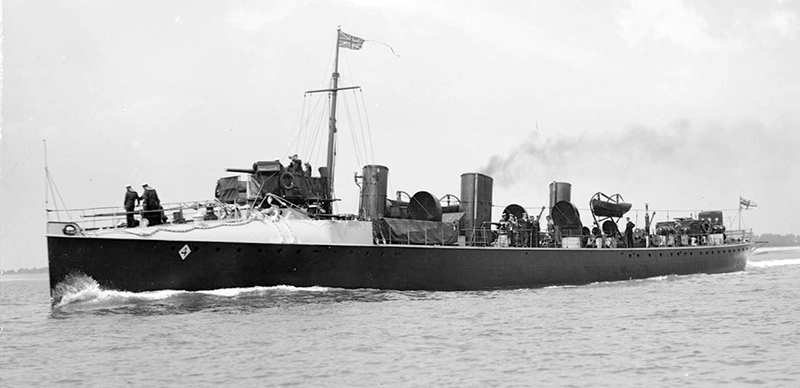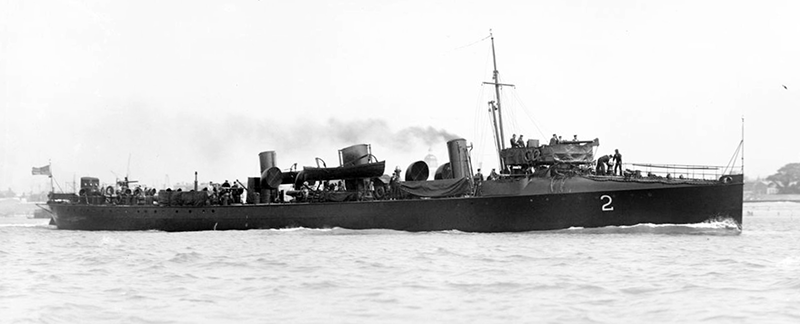

Crane 1898
| Name | No | Yard No | Builder | Laid down | Launched | Comp | Fate |
| Star | P07, D68, D79, H07 | Palmers, Jarrow | 23.3.1896 | 11.8.1896 | 9.1898 | sold 6.1919 | |
| Whiting | Palmers, Jarrow | 13.4.1896 | 26.8.1896 | 6.1897 | sold 11.1919 | ||
| Bat | P97, D46, D09, H87 | Palmers, Jarrow | 28.5.1896 | 7.10.1896 | 8.1897 | sold 8.1919 | |
| Crane | P26, D50, D20, H72 | Palmers, Jarrow | 2.8.1896 | 17.12.1896 | 4.1898 | sold 6.1919 | |
| Chamois | Palmers, Jarrow | 28.5.1896 | 9.11.1896 | 11.1897 | foundered 26.9.1904 | ||
| Flying Fish | P86, D57, D40, H69 | Palmers, Jarrow | 9.8.1896 | 4.3.1897 | 6.1898 | sold 8.1919 |
|
Displacement normal, t |
390 |
|
Displacement full, t |
440 |
|
Length, m |
67.1 oa 65.5 pp |
|
Breadth, m |
6.37 |
|
Draught, m |
2.97 |
|
No of shafts |
2 |
|
Machinery |
2 4-cyl VTE, 4 Reed boilers |
|
Power, h. p. |
6200 |
|
Max speed, kts |
30 |
|
Fuel, t |
coal 95 |
| Endurance, nm(kts) | 3000(10) |
|
Armament |
1 x 1 - 76/40 12pdr 12cwt QF Mk I, 5 x 1 - 57/40 6pdr Hotchkiss Mk I, 2 x 1 - 450 TT (4) |
|
Complement |
58 |
Project history: The successful trials of the first destroyers, particularly Daring, showed that higher speeds than the Admiralty had at first thought possible could be obtained, and in 1894 Thornycroft, Yarrow and Laird were all asked to submit designs for destroyers capable of 30kts, though at that stage orders could not be placed immediately. The first orders went to Thornycroft and Laird, and later other firms produced their own designs and built to them. Yarrow, however, thanks to conflicts with the Admiralty over their 27 knotter destroyers, did not receive any more destroyer orders from the Admiralty for several years, and concentrated on building for foreign navies instead.
As with the 27-knotters all the firms built to their own designs, the only common feature being the complement of 63 and the standard armament of 1 76mm and 5 57mm guns, plus 2 450mm TT. All except Thornycroft used triple expansion engines, whilst Thornycroft continued with their four cylinder compounds. Hulls were lengthened and the machinery was more powerful than the 27-knotters, but fundamentally the 30-knotters were only enlarged versions of the earlier destroyers.
As with the 27-knotters the high trial speeds were never achieved in service, or even in subsequent trials. Sea speed was more often around the 25kts mark, if that. The light structure of these destroyers caused some trouble with leakage and fractures, though in fact it stood up remarkably well to the strains of wartime service between 1914 and 1918 when these by then elderly vessels were mainly used for coastal patrol work. Many had their funnels raised in an attempt to minimize smoke and cinders at deck level.
Though quite a few of these vessels were delayed in their entrance into the service by difficulties in reaching the contract speed, more delay was caused with the later groups of vessels by the severe labour troubles in the late 1890s in the shipbuilding trades.
The first pair were ordered on 23.12.1895 and the remainder on 9.1.1896. Palmer boats were generally considered as perhaps the best all-round vessels of the 30-knotters. Certainly their machinery seems to have had the best reputation amongst engineers.
Modernizations: 1916-1917, Star, Bat, Crane, Flying Fish: + 2 DCR
Naval service: Chamois was lost in a very unusual way: 26.9.1904 one of her propeller blades came off when she was doing a speed run in the Gulf of Patras (Greece) and cut a big enough gash to sink her.

Star 1899

Crane
© Navypedia, 2020